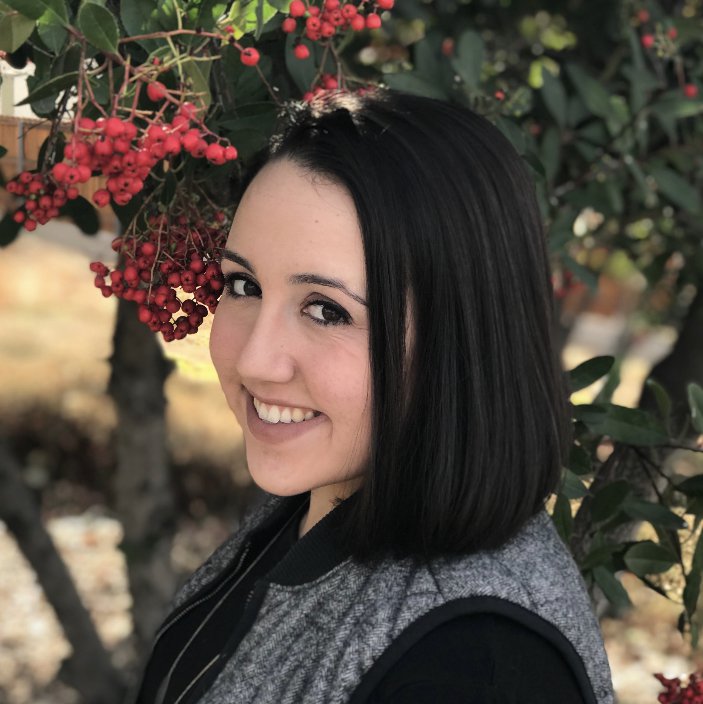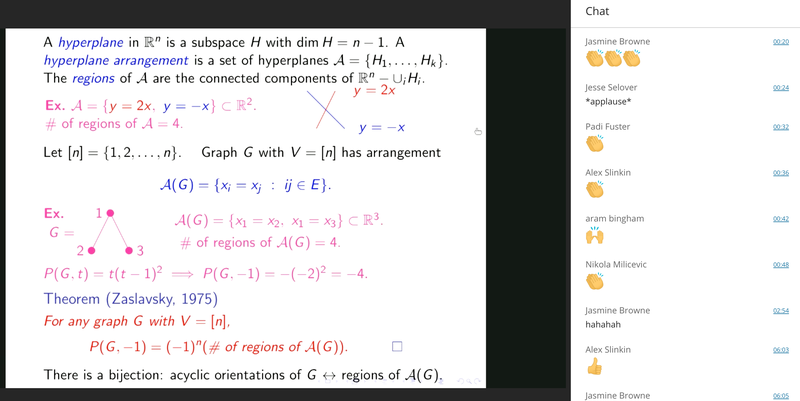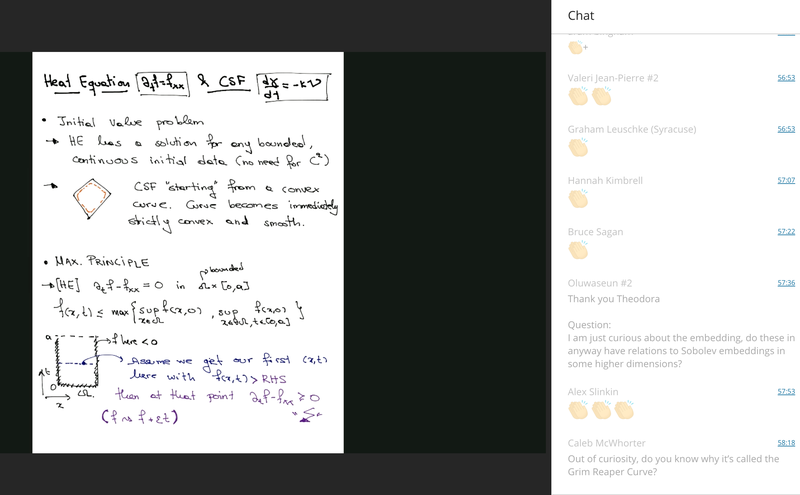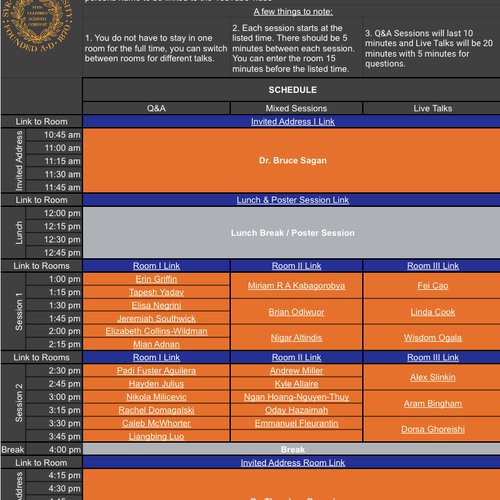
I was in charge of planning the nation's first entirely remote graduate math conference. This is not something I anticipated having the privilege of saying. In the midst of my fourth year of a math PhD, buried deep in research and with the job market looming on the horizon, this was not something that I had signed up for. As the Mathematics Graduate Organization (MGO) president, I knew that I would plan our annual conference, a task that I had closely observed and participated in the three previous years. However, with coronavirus beginning to sweep through the nation, holding the conference remotely was the only way to uphold the values and tradition of the conference while maintaining the safety of everyone involved.
The Conference: A Lesson in Grit
The Syracuse University Department of Mathematics is home to the longest running graduate student mathematics conference in the country, the Annual New York State Regional Graduate Mathematics Conference (ANYSRGMC). For nearly half a century, graduate students have planned this conference to give other math graduate students the opportunity to give talks, network, and be exposed to a wide variety of mathematics. The conference has since grown to a nationwide affair, with students coming from all corners of the country to participate. This conference has survived countless blizzards with true Syracusian grit, so cancelling in the face of a global pandemic was not an option.
I was eager to take the reins as president and plan the 45th iteration of the conference. After months of careful planning with my board, inviting speakers, securing funding, and innumerous emails, we were on track to hold another extremely successful conference. The 2020 conference was slated to be held on March 28-29. It was going to be the first two day ANYSRGMC in recent history, have our first ever undergraduate poster session, and have record attendance.
Transitioning Online: A Lesson in Communication
All of this changed three weeks before the conference. In early March, news of coronavirus related university closures began to circulate. I knew it was only a matter of time before Syracuse would follow suit, leaving the conference we'd worked so hard to plan hanging in the balance. In a time filled with unknowns, I decided to transition the conference to an online format. My goal was to provide participants with a clear plan, to offer an anchor for graduate students whose spring schedules had been upended, and to make good on our commitment to provide graduate students a friendly audience with which to share their research.
There were many aspects to transitioning the conference that had to happen concurrently to provide participants with as much information as we could as quickly as possible. Looking at the components of this transition, the primary component was the people involved. Our keynote speakers, Dr. Theodora Bourni (University Tennessee Knoxville) and Dr. Bruce Sagan (Michigan State University), graciously agreed to give their talks remotely and even offered advice and insight from remote conferences they'd participated in. We had students reregister/unregister for the conference, being sure to reach out to students who were previously unable to attend. Though some students had to withdraw, we had a number of students who were now able to participate because they no longer had schedule conflicts or no longer needed funding to participate.

In corresponding with the participants it quickly became clear that their principal concern was the reimbursement for travel that wouldn't happen. As graduate students we live on small stipends as it is. With the additional threat of potential coronavirus related medical expenses, shouldering the cost of airfare was not a possibility. Participants couldn't get refunds from airlines, travel credit was unhelpful for their overall financial situation, and they had purchased tickets under the condition that they would be reimbursed for at least part of its cost. Given that there was little to no overhead for holding a remote conference, we had ample unused funds to do this, however we needed to get approval from the university and the National Science Foundation. Unsurprisingly, neither group had policies in place for reimbursement during a global pandemic, but after much work I was able to secure a written guarantee that graduate students would be able receive promised reimbursement. This was a huge relief.

In figuring out the logistical component, my team and I were guided by two basic principles: maintaining the familiarity of a traditional conference structure while being able to offer flexibility where we could. To increase participation, we limited our conference to one day, March 28th, with shifted hours that were reasonable across many time zones. Maintaining a traditional conference schedule, the day was bookended by live keynote talks, with graduate student talks composing the body of the conference, and an interactive poster session during lunch. We organized these sessions in virtual “rooms” on Blackboard Collaborate Ultra (BCU). For graduate student talks, this meant having three concurrent rooms running throughout the day with trained volunteers acting as the host, moderator, and tech support. The structure of these talks emphasized flexibility afforded by doing a conference remotely. Students were given the option to either do a live talk followed by audience questions, or they could submit a recording of their talk to be temporarily posted on the MGO YouTube channel and hold a short Q&A session the day of the conference. It was very important to me to hold our inaugural undergraduate poster session despite the transition, a conviction which led to our greatest innovation of using breakout rooms on BCU. Each breakout room housed a poster/presenter and participants were able to move freely between these breakout rooms. While there were of course things that could be improved, the mix of structure and flexibility was praised by students in exit surveys.
Reflection: A Lesson in Gratitude
At the end of the conference, we received a lot of very positive feedback. Many were impressed by our ability to transition the conference so well in such a short amount of time. Many were thankful to have something to participate in. Some were grateful to be able to participate from home, not having to worry about the stress and time it takes to travel. Others missed the social interaction and networking aspects of a conference. I can honestly say that I completely agree with each one of these sentiments. The transition to an online conference offered a glimpse into the potential for conference participation to be independent from one's ability to secure funding, something which is especially difficult for younger students and students from underfunded departments. Most of all, I was thankful for the people who helped me quickly transition the conference into a positive online experience; the conference would not have been possible without the time and support of the other members of the MGO board, the student volunteers, and the faculty who offered invaluable guidance.

While we don't know what next spring has in store for our conference, I can say for certain that the conference has the longevity and grit to overcome any challenge that tries to get in the way.
